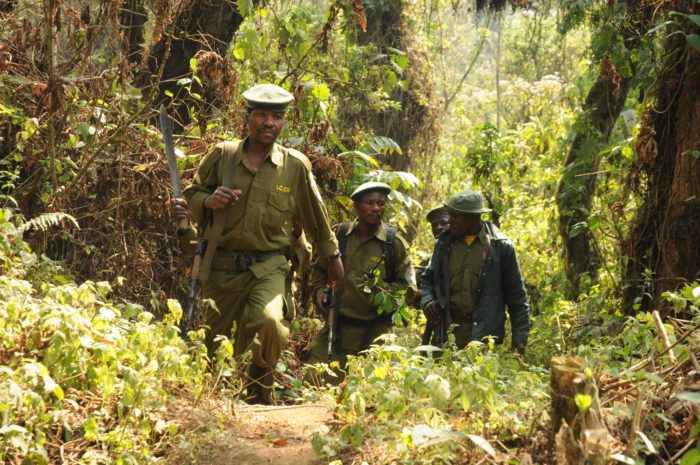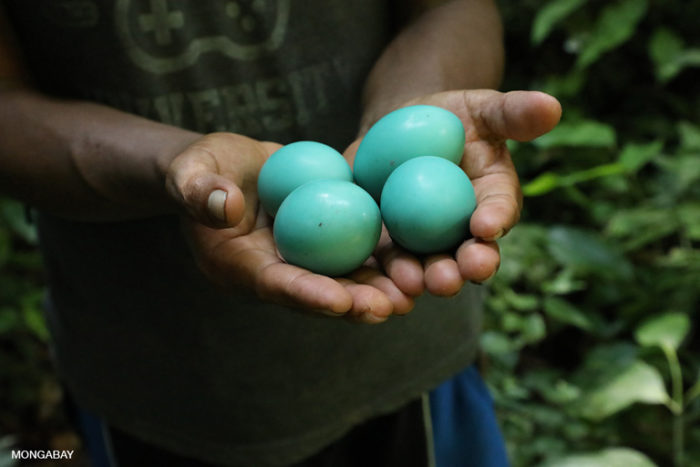- In July, the U.N. released a draft of the Post-2020 Global Biodiversity Framework, which called for 30% of Earth’s land and sea areas to be conserved.
- Known as “30 by 30,” the plan has drawn fire from Indigenous rights activists and their allies, who say that it could prompt mass evictions.
- Earlier this month, 49 foundations sent a joint letter to the plan’s drafters, saying a focus on creating new protected areas would “lead to human rights abuses across the globe.”
- “30 by 30” is exposing fault lines in the modern conservation movement over who should control biodiversity protection and where funding should be directed.
- This article was first published by Mongabay on 26 August 2021. You can read the original here.
The statistics paint a grim picture: Accelerating species losses, 10 million hectares (25 million acres) of forest destroyed every year, apocalyptic declines in the abundance of some wildlife. The planet is in a biodiversity crisis, with some scientists saying if we keep it up, we may tip into a “sixth mass extinction.”
In mid-October, governments from around the world will meet remotely at the U.N. Biodiversity Conference, also called COP15, to start hashing out plans to tackle the crisis. Under discussion will be the Post-2020 Global Biodiversity Framework, a road map released by the U.N. in July that organizers hope will eventually gain the support of 196 country representatives set to gather in China next spring.
Their core proposal is called “30 by 30” — a plan to conserve 30% of Earth’s land and sea areas by 2030 through “area-based conservation measures” like protected national parks. The idea has picked up steam in recent years, with U.S. President Joe Biden promising to implement it in the United States as part of his climate strategy.
But some Indigenous advocates and their allies have sharply criticized the plan, saying it takes the wrong approach to conservation and, if implemented poorly, could result in millions of people being evicted from their ancestral territories. Earlier this month, they were joined by a group of 49 philanthropic organizations that signed an open letter to the draft framework’s authors, warning that it could replicate colonial legacies of Indigenous dispossession.
“While protecting at least 30% of the planet’s land and oceans by 2030 is on its face a worthy goal of responding to biodiversity loss, the Framework’s focus on ‘protected areas’ will likely continue to lead to human rights abuses across the globe,” the letter says.
With signatories including the Fund for Global Human Rights, the Tides Foundation, and the First Nations Development Institute, the letter is part of a growing chorus of criticism being levied against what has been dubbed “fortress conservation.” The model of safeguarding wildlife and landscapes through protected areas, they say, is part of a long history of mistreatment and abuse of Indigenous people.
“How it’s working right now is a militarized form of conservation,” said Alejandro Argumedo, Amazon lead for the Swift Foundation and a member of Peru’s Quechua people. “You have guards with guns, people imposing fines, building fences and kicking people out of their traditional lands. And if communities react in defense they are perceived as anti-conservation.”

Old conservation models come under new scrutiny
In 2019, Buzzfeed News reported on allegations of severe human rights abuses carried out by park guards supported by WWF in a scandal that led to the appointment of an independent review panel. Advocates say the coverage revealed the human costs of militarized conservation to a public that had previously known little about abuses tied to the protection of wildlife.
“I think the Buzzfeed exposés were a bit of a watershed moment,” said Joe Eisen, director of the Rainforest Foundation UK. “It’s where it kind of went mainstream, and the big donor agencies like the U.S., the European Commission, and Germany, all of a sudden it became a political issue for them.”
Despite the scandal, the momentum of “30 by 30” and its inclusion in the draft framework suggests that buy-in for a global expansion of protected areas remains strong among many policymakers and conservationists. When implemented wisely, advocates for that model say, it can protect ecosystems and reduce the risk of species loss.
But critics argue that protected areas often force Indigenous and other local communities to pay the price for an ecological crisis they bear little responsibility for.
“This paradigm has been dominated and created, funded, and lobbied for by conservation organizations in the Global North, and the danger here is that the majority of the land acreage for conservation will result in large land grabbing and dispossession of Indigenous peoples,” Argumedo said.
Last year, the Rights and Resources Initiative (RRI) released a study showing that more than 300 million people live in unprotected “key biodiversity areas,” which cover 9% of the planet. Currently, 15% is under some form of protected area management. When the full 47% of the Earth that would be required to conserve all terrestrial biodiversity was included, the population figure rose to just under 2 billion people. Most were in lower-middle-income countries or in China.
Resettling even a fraction of that number wouldn’t just be a massive abuse of human rights, the authors wrote, it would also be financially infeasible. Under standard rates used by international financial institutions to compensate people affected by development projects, resettling the 300 million people currently living in key biodiversity areas under a push to expand protected areas would cost around $1 trillion, not including the economic and intangible non-monetary impacts of being evicted from their homelands.
“If it’s decided by governments and implemented in a top-down fashion, it will ultimately fail due to the disconnect from reality,” said Thomas Worsdell, one of the co-authors of the report.

Shift power to Indigenous communities, advocates say
Indigenous rights advocates and researchers say there’s a better way to achieve conservation outcomes: devolve power to Indigenous and local communities, and help them secure formal land tenure.
“If you look at all the different studies out there, it’s very clear that the regions where Indigenous people in particular have control over their forests, and by control I mean secure titles, rights, and recognition of their traditional territories, that’s where we see those forests intact and biodiversity observed to a large degree,” said Nikhil Aziz, director of land, water, and climate justice at the American Jewish World Service.
Earlier this year, the U.N.’s Food and Agriculture Organization put out a report showing that deforestation rates were significantly lower in areas where collective Indigenous and Tribal land rights had been formally recognized. And in Guatemala, community-managed forest concessions have been shown to have far better conservation outcomes than in adjacent protected areas.
According to RRI’s research, granting land tenure rights also costs significantly less than evictions and park management — between $3 and $11 per hectare, depending on the country.
“We have to figure out how to disrupt the flow of funding to these large conservation groups and be willing to say this isn’t a model to put in place,” said Suzanne Benally, director of the Swift Foundation, which helped coordinate the open letter. “We need to redirect our funding to Indigenous people.”
Recognition of land rights hasn’t always been a silver bullet for threats to biodiversity, though. In Liberia, despite a progressive law that grants exclusive forest management rights to rural communities, logging and mining interests have used poverty and weak governance to undermine the new system.
Researchers say there’s no single solution that will work everywhere, but a good start would be to change how money is spent on protecting biodiversity.
“Securing rights is just the first step,” said Alain Frechette of RRI. “They need governance support, they need enforcement, they need technical resources, they need investment in terms of creating livelihood opportunities and sustainability over time. All that requires funding and support.”
Part of the problem, Indigenous activists say, is the idea that conservation means a hard separation between humans and nature. In the United States, for example, the establishment of national parks like Yellowstone came at the expense of Native communities that had lived there for thousands of years without damaging the environment. Still, convincing parts of the conservation world that Indigenous people are stewards of biodiversity rather than a threat to it remains a challenge.
“For me, the problem is this dichotomy of conservation and use,” Argumedo said. “We have abstracted ourselves from nature and are no longer part of it, so we see those areas as if we’re not part of them.”
For international aid agencies and donors looking to scale their expenditures and design standardized programming, nuance like that can be hard to write into bureaucratic project proposals.
“Global strategies are trying to have this one-size-fits-all approach that simplifies things,” Worsdell said. “That’s why tenure rights is a very feasible strategy, because it caters to that individuality and diversity of people through their agency, so they can determine what should be done through their own structures.”
As COP15 approaches, Argumedo said he hopes the letter sent by the 49 foundations will cause delegates to rethink old approaches to the biodiversity crisis.
“This is a strong wake-up call and a callout to conservation organizations on their behavior,” he said. “Fortress conservation and militarized protected areas shouldn’t be part of this equation.”
Banner image: Wildlife rangers in Cambodia, Rhett Butler for Mongabay.
Related listening from Mongabay’s podcast: Wildlife Conservation Society’s director of global conservation discusses 30 x 30 plans, the key role that Indigenous Peoples play in conservation, and how their communities ought to be engaged in such plans, listen here:

![cambodia_161102[1]](https://lab.org.uk/wp-content/uploads/2021/08/cambodia_1611021.jpeg)